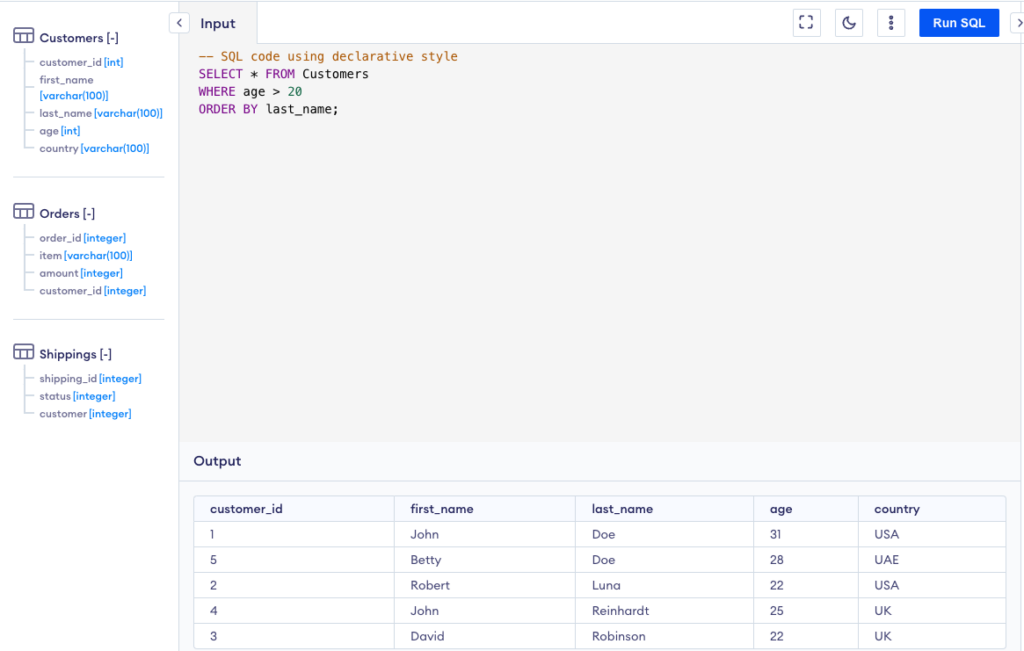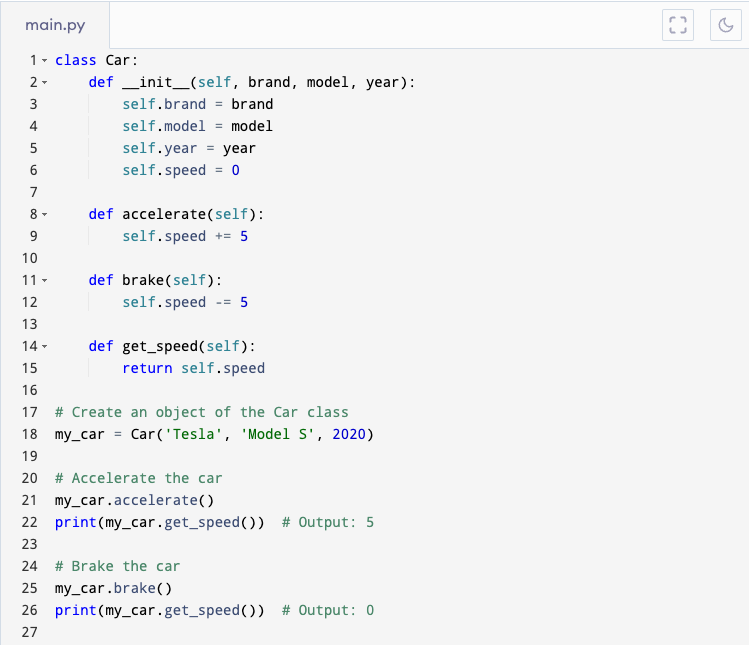Firstly, welcome to this blog post, Coding Terminology Guide, about a simple introduction to coding terminology. We designed this post about the coding terminology guide to simplify the complex world of coding for beginners, providing clear explanations of essential terms and concepts that every coder needs to know. From understanding the basics like syntax and variables to grasping more advanced terms such as functions and loops, our guide ensures you’ll start coding confidently.
We have created this blog post for the EU-Funded Code For Future Project (reference number: 2022-3-DE04-KA210-YOU-000092666).
Xient GmbH coordinates the project with L4Y Learning for Youth GmbH and Seyhan Danisment Gazi Anadolu Lisesi.
During this project, we will share more content regarding coding, which you can check through this link.
Learning Objectives
- Understand essential coding concepts including variables, functions, loops, and conditional statements, and how they are applied across different programming languages such as Python, JavaScript, and C++.
- Gain an understanding of various programming paradigms including imperative, declarative, procedural, object-oriented, and functional programming, and recognize how these paradigms influence the structure and behavior of code.
- Learn about the structured approach to software development which involves planning, designing, implementing, testing, and maintaining software, along with understanding the importance of debugging, version control, and refactoring in this process.
- Acquire knowledge about advanced coding tools and concepts such as APIs, frameworks, libraries, and algorithms, and understand their roles and applications in building complex software systems.
- Explore how coding applies practically across various domains like data analysis, digital marketing, project management, and technical writing, and how mastering these skills can enhance career prospects and efficiency in these roles.
Coding Terminology Guide: Introduction
Coding, also known as programming, is the skill of developing executable computer programs that achieve specific outcomes or handle particular tasks. Engaging in this critical activity involves writing, testing, debugging, and maintaining the source code of computer programs. Programmers write this source code using various programming languages, which are formal sets of instructions capable of producing a wide range of outputs. These languages are indispensable for building everything from software applications and system software to machine control and complex computational tasks.
Basically, there are many different programming languages, each with its own syntax and use cases. For example, some popular ones include Python, known for its simplicity and wide use in data analysis; JavaScript, the language of the web; and C++, a powerful language used in systems software and game development.
As a matter of fact, coding involves problem-solving, as you need to figure out the most efficient way to get a computer to perform a desired task. It also requires a good understanding of the language you’re using, as well as the ability to debug when things don’t go as planned.
Learning to code can open up numerous opportunities, from building your own applications to starting a career in tech. It’s a skill in high demand in today’s digital world.
Basic Coding Concepts
There are basic things you need to know while learning programming:
Variable
Variables are like containers that store data. The data can be of different types, like numbers, strings, boolean values, etc. For example, in Python, you can declare a variable like this: age = None and age = 25

Function
Functions are reusable pieces of code that perform a specific task. They can take inputs, known as parameters, and return an output. For example, a function to add two numbers in Python could look like this: def add(a, b): return a + b.

This Python code in Figure 3 defines a function called “factorial” that calculates the factorial of a non-negative integer.
The function returns a message stating that we did not define the factorial for negative numbers if it detects a negative input number. For an input of 0, it returns 1, because we defined the factorial of 0 to be 1. For positive numbers, the function calculates the factorial using a loop, multiplying each number from 1 to the input number to obtain the factorial value.
Loop
For
We use loops to repeat a block of code multiple times. For example, a for loop in Python for finding the total sum of numbers would be:

It starts by setting the total sum to zero. Then, it checks each number in the list one by one. For each number, it adds that number to the total sum using a loop called “for”. This loop goes through each number in the list one by one, starting from the beginning and moving through each number until it reaches the end. After checking all the numbers, it gives us the total sum as the result. For example, if we have the numbers 1, 2, 3, 4, and 5 in a list, this code will add them together using the loop “for” and tell us that the sum of these numbers is 15.
While
In this code, the Python code helps us print all positive integers up to a specified number “n”. It starts by setting a variable “i” to 1. Then, it enters a loop called “while”, which continues executing as long as the value of “i” is less than or equal to “n”. Within this loop, it prints the current value of “i”, which represents a positive integer. The program increments the value of “i” by 1 to move to the next positive integer after printing it. The process continues, incrementing the value of “i” after each print, until it exceeds “n”, ensuring the printout of all positive integers up to “n”.. For instance, if we set “n” to 5, this code will print the positive integers 1, 2, 3, 4, and 5, one by one, using the “while” loop.

Conditional Statements
We use conditional statements to perform different actions based on other conditions. The most common conditional statements are if, else, and elif. For example, in Python, an if statement to check if a number is positive could look like this: if num > 0: print("Positive").

This code effectively checks if a number is positive, and if so, it prints “Positive”
Programming Paradigms:
Programming paradigms are a way to classify programming languages based on their features. They represent different styles or philosophies of programming. Here is a brief overview:
Imperative Programming – A Guide to Coding Terminology
Imperative programming is a paradigm that uses statements to change a program’s state. Additionally, it consists of commands for the computer to perform. Imperative programming focuses on describing how a program operates. The most common method of implementing imperative programming is via procedures or routines, and we can find approach in languages such as C, Java, and Python.

The code defines a function in Python that sorts a list of numbers in ascending order using the Bubble Sort algorithm. It repeatedly traverses the list, compares adjacent items, and swaps them if they are in the wrong order. We repeated this process until we sorted the list, and then we got the list. Despite its simplicity, this method is not very efficient for large lists.
Declarative Programming – A Guide to Coding Terminology
On the other hand, declarative programming is a paradigm that expresses the logic of a computation without describing its control flow. Particularly, it focuses on what the program should accomplish without specifying how the program should achieve the result. Many languages that apply this style are domain-specific and include SQL (for database interactions), HTML (for web page structure), and CSS (for web page style).

It is a query that selects records from a database table named Customers. The SELECT * FROM Customers statement selects all columns for each row in the Customers table. The WHERE age > 20 clause filters these records to only include customers who are older than 20 years. Finally, the ORDER BY last_name; clause sorts the resulting set of records alphabetically by the last_name column in ascending order. The output shown beneath the SQL code displays the customer data sorted by last name, with all customers being older than 20.
Procedural Programming – A Guide to Coding Terminology
We call this programming paradigm as “procedure calls” structures statements into procedures, also known as subroutines or functions. Each procedure is a series of computational steps. Procedural programming languages include C, Go, and Python.

The Python code defines a function named calculate_average that calculates the arithmetic mean of a list of numbers. It initializes a sum accumulator to zero, iterates over the list to add each number to the accumulator, and then divides the total sum by the number of elements in the list to find the average. We call this function with a list of numbers [2, 4, 6, 8, 10], and we print the resulting average to the console, which would output 6.0 given this list.
Object-Oriented Programming (OOP) – A Guide to Coding Terminology
OOP is a programming paradigm based on the concept of “objects”, which can contain data and code: data in the form of fields (often known as attributes), and code, in the form of procedures (often known as methods). A feature of objects is that an object’s own procedures can access and often modify the data fields of itself (objects have a notion of “this” or “self”). Languages that support OOP include Java, C++, and Python.

The code defines a Car class in Python, with methods to set the car’s brand, model, and year, and to control its speed through acceleration and braking. It initializes a car object with the brand “Tesla,” model “Model S,” and year 2020, sets its initial speed to 0, and includes methods to increase the speed by 5 (accelerate) or decrease it by 5 (brake). The get_speed method is used to check the car’s current speed. In the example, the car is accelerated once (increasing speed to 5) and then braked once (decreasing speed back to 0), with the speed printed to the console after each action.
Functional Programming – A Guide to Coding Terminology
Functional programming is a programming paradigm where programs are constructed by applying and composing functions. It is a declarative programming paradigm in which function definitions are trees of expressions that each return a value, rather than a sequence of imperative statements which change the state of the program. In functional programming, functions are first-class citizens, meaning that they can be bound to names (including local identifiers), passed as arguments, and returned from other functions, just as any other data type can be. Functional programming languages include Haskell, Erlang, and Scala.

The code snippet defines a function increment_by_n that creates and returns a lambda function, which is an anonymous function in Python. This lambda function takes one argument x and returns x incremented by n, where n is the parameter provided when increment_by_n is called. The function increment_by_n is then used to create a specific increment function increment_by_2, which will add 2 to any number it is called with. Finally, increment_by_2 is called with the argument 5, and as expected, it returns 7, which is then printed to the console. This code demonstrates a functional programming style where functions are used to create other functions.
Development Process
The development process is a structured approach to creating software. It involves several stages: planning, design, implementation, testing, and maintenance. Each stage has specific tasks and deliverables that contribute to the final product. The goal is to ensure the software is high-quality, meets user requirements, and is delivered on time.
Debugging
Debugging is the process of identifying and resolving issues or “bugs” in a software program. It involves reproducing the issue, understanding the problem, finding the part of the code causing the issue, fixing it, and then testing to ensure the problem has been resolved. Debugging tools can help developers track down issues more efficiently.
Version Control
Version control, also known as source control, is a system that records changes to a file or set of files over time so that specific versions can be recalled later. It allows developers to work simultaneously on a project without overwriting each other’s changes. It also provides a history of changes, which can be useful for debugging and understanding the evolution of a project.
Refactoring
Refactoring is the process of restructuring existing code without changing its external behavior. The goal is to improve the design, structure, or implementation of the software, while preserving its functionality. Refactoring can make code more readable, maintainable, and extensible. It’s an integral part of agile and test-driven development practices.
Advanced Concepts
API (Application Programming Interface)
Firstly, API (Application Programming Interface) An API is a set of rules and protocols for building and interacting with software applications. It defines the methods and data formats that a program can use to communicate with other software or components. APIs are used in programming graphical user interface (GUI) components, as well as to allow a software to interact with another software, such as accessing features of operating systems, databases, or other services. APIs greatly simplify the programming process by providing all the building blocks, which the programmer then puts together. They are essential tools for developing software and are used in distributed computing to modify and maintain software. APIs can be built for web-based applications, operating systems, databases, hardware, or software libraries.
Frameworks and Libraries
Secondly, a framework is a platform for developing software applications. It provides a foundation on which software developers can build programs for a specific platform. A framework may include predefined classes and functions that can be used to process input, manage hardware devices, and interact with system software. This is particularly useful for developers as it allows them to focus on the high-level functionality of their application, rather than the low-level details of managing a system.
Thirdly, a library is a collection of precompiled routines that a program can use. The routines, sometimes called modules, are stored in object format. Libraries are particularly useful for storing frequently used routines because you do not need to explicitly link them to every program that uses them. The linker automatically looks in libraries for routines that it does not find elsewhere. When a routine from a library is linked to a program, it becomes a part of that program. So, libraries are an essential part of most programming languages, including C++, Java, Python, and others.
Algorithm
Fourthly, an algorithm is a step-by-step procedure to solve a particular problem. Specifically, in the field of computer science, an algorithm is a sequence of instructions that a computer can interpret to perform a specific task and this task could be anything from sorting a list of numbers, searching for a particular item in a database, or rendering a 3D graphic scene.
In truth, algorithms are fundamental to computer science and software engineering. Basically, They form the backbone of every program and system we use – from the Google search engine that can quickly find relevant results among billions of webpages, to the GPS system that can find the shortest route between two locations.
There are many types of algorithms, each with its own strengths and weaknesses. Some are general-purpose and can solve a wide range of problems, while others are specifically designed for a single task. Some algorithms are fast and efficient, able to process large amounts of data quickly, while others may be slower but use less memory or have other desirable properties.
References
- Geeksforgeeks(2024). Introduction of Programming Paradigms. URL: https://www.geeksforgeeks.org/introduction-of-programming-paradigms/
- German Cocca(2022). Programming Paradigms – Paradigm Examples for Beginners. URL: https://www.freecodecamp.org/news/an-introduction-to-programming-paradigms/
- Ma-Keba Frye(2024). What is an API? URL: https://www.mulesoft.com/resources/api/what-is-an-api
- Brandon Wozniewicz(2019). The Difference Between a Framework and a Library. URL: https://www.freecodecamp.org/news/the-difference-between-a-framework-and-a-library-bd133054023f/
- GCFGlobal(2024). Algorithms. URL: https://edu.gcfglobal.org/en/computer-science/hardware-and-software/1/
Coding Terminology Guide: Conclusion
Overall, understanding coding terminology is a crucial first step for anyone venturing into the world of programming. This Coding Terminology Guide has introduced you to basic coding concepts and essential terms such as Development Process, Debugging, Version Control, Refactoring, API, Frameworks, Libraries, and Algorithms. In fact, these terms form the foundation of your coding journey. and as you continue to learn and grow as a programmer, these concepts will become second nature. Remember, every expert was once a beginner. So, Happy coding!
Also, don’t forget to follow us on social media!





